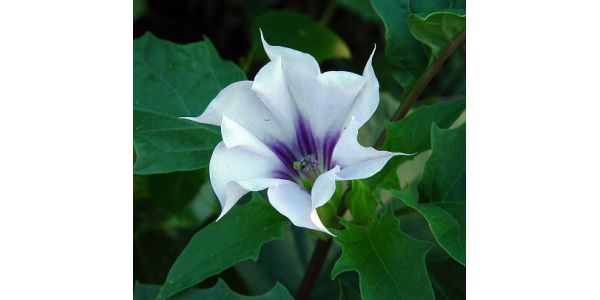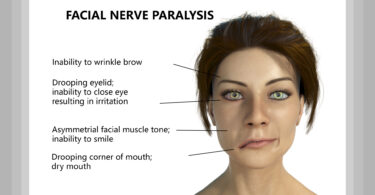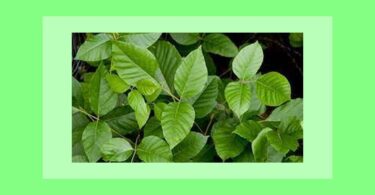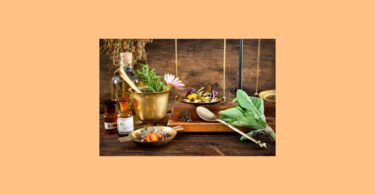A boy we will call Tom, just turned two years old and diagnosed with autism, comes to the clinic with his parents. He is a beautiful child with gray eyes and light curly hair, who immediately exhibits resistance to step into my office, and once there he refuses to sit with his mother and instead sits on the floor in a corner, away from my desk. His parents tell me that about five months ago they started observing certain alarming behaviors during a vacation on the beach. The first symptom was an extreme sadness for no apparent reason. Then, he began to have problems at bedtime, refusing to go to bed, stiffening his body and not wanting to go to sleep. During the day he started exhibiting total indifference and stopped responding to his name. He also started doing things he had never done before, like taking similar objects in each hand (for example, two bead necklaces) and holding them for a long time, refusing to release them, while swaying his body to and fro, or performing other repetitive movements. What worried the parents most was that he stopped responding to his name. Simultaneously to all this, he developed a terrible fear of the sea, and to the strong sunlight at the beach; he was terrified of approaching the shore or going into the swimming pool. He threw violent tantrums when taken to the beach and tried to run away. The previous year he had been in the same place and thoroughly enjoyed the sea and the swimming pool. Another place that caused intense fear were shopping malls with strong light and bright floors.
The next days after returning from their vacation, he seemed to feel better, began to respond to his name again and slept well. However, three days after their return, he woke up one night very frightened and screaming. He was very agitated, refusing his mother and pushing her away. He curved his back and stiffened his limbs. His parents had a very hard time calming him down. Since that day, they began to observe classical symptoms of autism in him, later confirmed by pediatricians and psychologists: echolalia or repetition of words and phrases, walking on tiptoe, flapping motion of the arms when happy, excessive resistance to any change or transition, indifference and inability to play or communicate with other children and adults. One of his strongest traits within this spectrum was his extreme anxiety when entering new places, especially stores or malls; he always tried to run away. At night he had to sleep in total darkness, even a tiny light would bother him to no end.
Tom has a twin sister who was born a few minutes before him. The pregnancy went very well until the thirty third week, when the mother suddenly experienced an episode of hypertension and her doctor fearing preeclampsia, admitted her into the hospital to have her under observation. The twins were born at 36 weeks, after a scheduled c-section. There were no complications in the procedure. The twins did well and did not require any neonatal intervention. They were breastfed for six months and everything seemed normal in both children up to 18 months. Just after they turned 18 months, both twins got sick at their daycare center. Tom began to cough, then got a runny nose and a fever. He completely stopped eating and the parents ended up taking him into the emergency room one night, where they put him on a drip, gave him paracetamol and prescribed a strong antibiotic to be taken for nine days. His sister also got sick but her symptoms were much milder, so she didn´t undergo any treatment.
After this incident, the parents began to notice changes in Tom. Before 18 months, both twins spoke at the same level, but after this point the girl kept developing and Tom seemed to be stuck. He started not interacting with his sister, or playing with her; he started mimicking her and trying to control her activities. In the day care center he also stopped interacting with other children, and rejecting them when they approached him. His parents started him on specialized therapy in a certified center for autistic treatment. After months of therapy, he became more affectionate with his family members, teachers and other kids at the daycare.
A young therapist spends mealtimes with him at the centre to encourage him to eat. He has been having problems with food: he has never been a good eater, always struggling to try new foods and taking a long time to eat minimal amounts. Even as a baby he tended to refuse his mother´s milk and later the bottle (his sister did too.) Now, he likes cereal, eggs, meat and legumes. He still rejects milk.
Tom´s parents are young, both in their early thirties. They are in good health, educated to college level and very attentive to the twins’ care and education. The mother has a history of migraines, had a previous ectopic pregnancy before the twins and has some family history of schizophrenia (one maternal uncle) and multiple sclerosis (her own sister). The father has been operated on for perianal fistula, is prone to colds and has a tendency to subcutaneous abscesses. There is dementia in his family, as well as leukemia, heart and respiratory problems . There is also schizophrenia in his family (a paternal grandfather.)
Homeopathic Treatment
Tom was treated with the homeopathic remedy STRAMONIUM DATURA. He first took a single dose of 30CH, after which I lost contact with the family for about four months, and thought they wouldn´t return to the clinic. However, the mother called me one day and said that it had taken her a while to realize that Tom had gotten better from the remedy. Initially, Tom had refused to take the remedy, first in water, as it was prescribed and later as a dry dose. In the couple of months that followed after the remedy, Tom had a number of colds with coughing and runny nose, but the parents didn´t medicate him this time, just let them run their course. His behavior didn´t change in these first weeks, but slowly thereafter, Tom started to show some positive changes: more eye contact and improved interaction with his sister, things that made his therapists very satisfied with his progress. Still he had many fears, especially water and insects, and complained often that there was someone behind him. He also kept his rituals, always putting on the same bracelets before going down to breakfast, or repeating the same actions while playing games.
At this point I put him on STRAMMONIUM DATURA LM1 for 21 days and asked the mother to report to me weekly. Tom started developing more and more communication skills, eye contact and displays of affection. His language improved considerably as he incorporated more and more vocabulary, and his fears of malls and new places dissolved, as well as his nightmares and rituals. When he came with his mother for a follow up, nine months his first homeopathic appointment, Tom greeted me at the door looking me in the eye and embraced me at his mother´s prompting. His mother, tears streaming down her face, showed me the letter wherein the team of psychologists declared him out of the autism spectrum. His last tests had rendered completely normal results. Tom was again a normal healthy child. He remains well to this day.
Remedy Discussion and Case Analysis
The remedy Stramonium is made from the plant Datura Stramonium, a plant belonging the Solanaceae family, indigenous to Mexico, parts of Latin America and India. In its crude substance state, Datura is a very toxic plant, that contains strong neurotoxic alkaloids, including scopolamine, atropine and hyoscyamine, psychoactive elements which affect the central and peripheral nervous system. Minute amounts are sufficient to induce severe or even fatal poisoning. Datura has been traditionally used by shamans to induce altered states of consciousness and trance.
In its homeopathic diluted preparation, Stramonium is administered to patients who feel extreme fears, fears that arise from deep within and can give way to uncontrolled panic attacks, with extreme violence, to the point of biting, hitting, scratching, tearing clothes and blaspheming. The Stramonium patient feels utterly alone and abandoned in a terrifying place, does not recognize anything or anyone, he is paralyzed by fear and reacts with violent desperation, fighting, thrashing about, or fleeing from the perceived impending danger. Some patients do not externalize this violence, and may develop nervous symptoms such as tics, convulsions or violent spasms. Stramonium may also have pictures of indifference and isolation. There exists in this remedy a polarity between darkness and light: on the one hand there is much fear of the dark, night is the time most feared by the Stramonium patient with its chilling nightmares; on the other hand, a person needing Stramonium can also be terrified of bright lights, and light-reflecting surfaces, like water or mirrors. Stramonium patients also have the tendency to ritualize certain behaviors or present chronic manias, many times as a way to fend off their fears.
Stramonium affects primarily the neurological system, therefore, in the physical, the patient may present insomnia, congestive headaches, dizziness, high fevers with delirium, twitching, tics and spasms in the limbs, even seizures. It can also affect the digestive system producing gastritis and diarrhea. Symptoms improve with rest, under soft light, and in the company of one person; they tend to get worse in darkness, when alone and in situations of strong light or shiny surfaces.
In the case of our little patient, Tom, we see this sensitivity to the polarity of light and darkness. He reacts violently when exposed to bright lights, such as the sun on the beach, or the dazzling lights in shopping malls, and although he insists on sleeping in total darkness, he has terrible nightmares after which he reacts with violence. His behavior is also violent in his extreme tantrums and panic attacks, where he tries to flee the places (beach, mall) that produce fear. His apparent indifference, not responding to his name and not making contact with loved ones, gives us the measure of how lost he is in his delusional world of terrors. The little obsessive rituals, so typical of this remedy, are behaviors in which the patient takes refuge in order to escape from the dark world that surrounds him. As we can see, a child living in this delusional mental level, can not pay attention to the learning process or to the social need of bonding with parents, teachers or other children, because all his energy needs to be employed surviving in his horrific delusional world .
Conclusion
The amazing results in Tom´s case after treatment with Stramonium surprised his parents, teachers and therapists; even myself. Therapists admitted to his parents that they never expected him to move out of the autistic spectrum. And as a homeopath who has treated other autistic cases, I was surprised to see such a fast and radical response to the remedy. Probably the situation was helped by the fact that Tom was not taking any type of medication for his condition.
Witnessing how a homeopathic remedy can favorably alter the course of a child´s life is one of the most rewarding experiences of any dedicated homeopath.
For more information go to Homeopathy Treatment of Autism






Thank you for sharing this wonderful case with us and congratulations. I like the description of the case and the explanation.
Bravo, a talented homeopath!
Yet one more example of what can happen when you give drugs to stop a fever, it can be very dangerous to stop a fever with anything other than homeopathic remedies, and yet even homeopaths can be so afraid of fevers that they will take their child right to the doctor before even trying Belladonna, Gelsemium or some other indicated remedy, and you can see, with this case, how dangerous that can be. The immune system does not like to be interfered with.
What a great outcome and good explanation of Stramonium. Thank you!
Thank you for sharing this wonderful case!
How wonderful to read this. Very interesting that the initial time scale was gradually yielding small positive signs and lovely that the parents recognised this and followed up. A lesson in not changing prescription! People are generally expectant of a quick response which can make such cases tricky when there is often a team of other therapists involved too. Well done Susanna and thank you.
well done,thanks for sharing your case
A lovely case and very well described. Thank you, Susana! Yes, it is certainly very heart-warming when we see wonderful results like this. I always send out a “Thank you, Dr. Hahnemann” from my heart at moments like this.